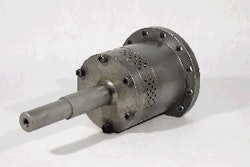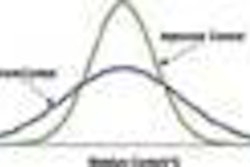Are you thinking of expanding your ingredient sourcing beyond your own country? Many companies are doing so as they attempt to improve competitiveness by expanding to a global supply chain. The success of global purchasing to a large extent depends on how well the supply group recognizes and efficiently deals with international market pitfalls and challenges.
Global sourcing involves unique challenges. A few issues include:
Different cultures;
Different languages;
Regulations;
Environmental conditions;
Logistics;
Tariffs;
World political issues that affect trade; and
Ingredient inconsistency due to wide variations in ingredient quality, composition and growing and processing conditions.
The overall goal of procurement is to find international ingredient suppliers capable of low-cost production of quality ingredients and delivery that meets production schedules. Procurement managers who follow best practices are usually successful in helping improve products and business profitability. A few of these best practices will be discussed in this article.
Develop and network teams
Teams, which sometimes include selected third parties, can be of great benefit to a company in gathering and disseminating intelligence of local ingredient market conditions. First-hand knowledge of climate, growth conditions, crop availability, price, ingredient quality and supplier information is invaluable for making rapid and knowledgeable purchasing decisions.
Selection of third parties should take into account their knowledge of market conditions, as well as shipping procedures in the various market areas served. Third parties can be extremely helpful in gathering and following local shipping and receiving procedures. They know the local language and can aid in the clearance of customs, as well as prepare essential shipping documents and guarantees for local regulatory and legal compliance.
Select team members with expertise
Traditionally, representatives from management, finance, legal, marketing, R&D, quality assurance and operations have been included on the purchasing team. However, any individual who directly affects the procurement strategy and can improve the efficiency of decision making should be included. The presence of management on the team provides communication of company strategy and support for the decision-making process. Finance and legal are especially critical in global operations, as the elements of foreign exchange, risk management, transportation, documentation and both tariff and non-tariff issues can create "make or break" situations.
Marketing's role must be both strategic as well as tactical. Clear definition of the market and product positioning is critical in determining whether the company competes on a "least cost of production" or "least cost of performance" basisor in an economy, premium or superpremium marketing segment. R&D provides the technical and nutritional parameters for ingredients, packaging, processing and the final products.
Quality assurance is essential in evaluating the quality and process controls of a supplierwhich assures on-going quality. Involvement of manufacturing operations is essential for production scheduling and quantifying requirements as they relate to facility capabilities. They are the first to view materials at the plant and measure their acceptability and suitability for processing.
Key team functions
One of the key team functions is to develop and implement a checklist of key questions for consideration that is specific to company needs and market conditions. Critical items to include are:
Contract integrity (full compliance of all terms and conditions with financial responsibility);
Communication of specifications (language translation may be required);
Shipping instructions and scheduling (including both in-land freight, elevation, storage and ocean freight); and
Payment terms and conditions (letters of credit, currency, documentation requirements).
Procurement managers "know" their suppliers
Identifying the type of supplier desired and developing a working relationship with them are critical for success. Some desired supplier characteristics include: High level of integrity; producer of consistent high-quality products in sanitary facilities; manufactures in multiple plants to ensure a stable supply; good quality assurance programs in place; has motivated, well-trained employees; and is legally compliant.
Visiting the supplier provides a means of first-hand observation of the supplier and their operation. It aids in the development of good working relationships and better communication. It provides a means of visual inspections of plant facilities, production processes and quality control procedures. Visits to the plant are also helpful in determining how well the supplier is keeping up with technologyi.e., is the supplier doing any modernization of his process or installing new equipment that may improve quality or make the process more efficient? Nothing replaces face-to-face meetings for developing long-term relationships.
Procurement managers check quality of received material
In addition to verifying that laboratory and quality procedures are in place at the supplier's plant, it is also important for the procurement manager to assure that a quality program is in place for receiving ingredients. These checks ensure that specifications are met and ingredients are free of contaminants, off-colors and malodors.
The use of near infrared equipment (NIR) permits rapid and precise nutrient analysis at unloading. This should be a "check" on analyses done by the supplier before shipping. These analyses should be used to verify nutritional composition, provide feedback to suppliers and provide additional information for formulation. It should be emphasized that testing should be done as far up the supply chain as possible to ensure that arriving ingredients are "in specification" and can be immediately incorporated into a product. Determining that an ingredient is out of specification upon arrival presents un-due hardships, and may result in shutting down the plant.
Transit times on internationally-sourced raw materials will vary dramatically from domestically-sourced ingredients. Considering the possibility of receiving off-standard ingredients, the procurement manager must have safety stock or alternative local sources of raw materials to ensure continuity of production.
Purchasing managers analyze ingredients
Genetics, climate, varieties, fertilization programs, soil composition, growth conditions, processing methods, storage conditions and facilities are just a few factors that influence nutrient and ingredient variation. Even grains that are considered to have relatively-constant nutrient values are highly variable in the global market due to their high variability in starch, fat, protein and fiber.
Byproducts, such as poultry byproduct meal and grain byproducts, are even more variable in the global market than in the US, due to different processing conditions and types of material incorporated into the byproducts. Size and genetics of the processed bird, cuts of meat made available to the consumer and processing capabilities contribute to poultry byproduct meal ingredient variation.
Grain byproducts, such as wheat byproducts, corn gluten meals, etc., are made using different processing methods, resulting in variable nutrient composition. Therefore, it is essential to analyze every ingredient, especially byproducts, rather than relying on book values for nutrient compositional values.
In addition to evaluating nutrient composition, the ingredient should be evaluated for the presence of toxins. Not only are the ingredients containing the toxin affected, but byproducts and meals made from them become a concentrated source. Therefore, due to the adverse effect on health, a best practice to follow is to screen ingredients for toxins before incorporating them into petfoods.
Purchasing managers preserve identity of purchased materials
Preserving identity of the lot purchased during shipping and receiving is a challenging practice for procurement managers to follow. It is especially difficult for commodity-type items such as grains and protein meals. Most of these ingredients are transported "trans-ocean" via large vessels which likely commingle products at reception and loading. Keeping the ingredient separated from other similar ingredients is difficult and is another best practice that procurement managers follow to ensure ingredients arriving at the production facility are the actual purchased ingredients.
Purchasing managers provide feedback to suppliers
Suppliers need feedback to evaluate their performance. They need to know how the quality of their ingredients compares with other suppliers in the supply chain. Feedback provides communication to the supplier that permits him to rapidly take action if the quality is not up to standard.
Supplier feedback could include such items as quality scores, nutrient variation from specification, on-time arrival, receipt of proper papers, appearance of product, etc. Any area that can be used by the supplier to improve performance should be included in the report. Reports should be done on a timely basis so the supplier can take action. Some companies have initiated communication on the Internet, permitting suppliers to receive immediate feedback from information posted on confidential websites.
In addition to performance feedback, quality audits on a regular basis are another best practice to follow. The frequency of the quality audits depends upon the performance of the supplier. If suppliers ship out-of-specification ingredients, audits should be done more frequently. The audit results can be used to determine the source of the problem and ultimately determine whether or not to continue working with the supplier. Commitment to quality is essential for everyone involved in the supply chain.
Purchasing managers initiate on-going cost savings initiatives
Cost savings initiatives are important and help contain costs for both the supplier and the manufacturer. Mutual initiatives promote teamwork, provide a means for developing mutual respect and permit each company to learn procedures for improving quality, service and cost.
Global procurement managers do more than just negotiate a low price. The practices that are followed determine the success of a global procurement program. Finding and keeping good suppliers that provide a consistent supply of high-quality ingredients which results in continuous production of consistent high-quality products is the ultimate test of whether or not sufficient best practices have been incorporated into the global purchasing program.

















